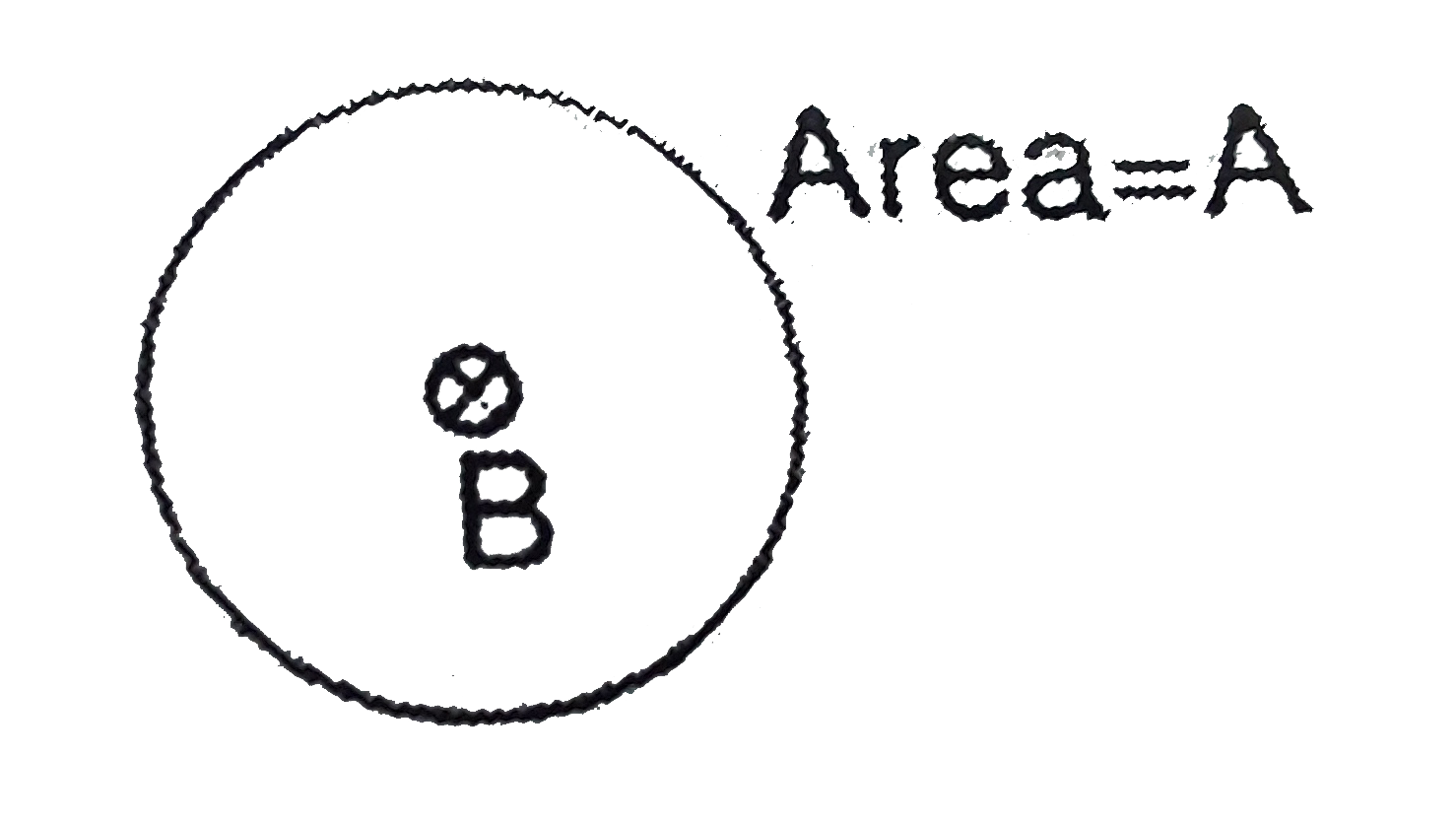In the figure shown the four rods have λ resistance per unit length. The arrangement is kept in a magnetic filed of constant magnitude B and directed perpendicular to the plane of the figure and direction inwards. Intially the sides as shown from a square. Now each wire starts moving with constant velocity v towards opposite wire. Find as a function of time:
(a) induced emf in the circuit
(b) induced current in the circuit with direction

After time t
Net emf : e=2B.2v(l−2vt)=4Bv(l−2vt)
i=eR=4Bv(l−2vt)4λ(l−2vt)=Bvλ , clockwise

Topper's Solved these Questions
Similar Questions
in fig. The four rods have λ resistance per unit length. The arrengement is kept in a magnetic field of constant magnitude B and directed perpendicular to the plane of the figure and directing in ward. Initially, the sides as shown form a square. Now each wire starts moving with constant velocity v toward the opposite wire.
Find as a function of time:
(a) induced emf in the circuit.
(b) induced current in the circuit with direction.
( c ) force required on each wire to keep its velocity consatnt.
(d) total power required to maintain constant velocity.
(e) thermal power developed in the circuit.

View SolutionFind the emf induced in the coil shown in figure. The magnetic field is perpendicular to the plane of the coil and is constant.

View Solution
Knowledge Check
In the figure shown the four rods have λ resistance per unit length . The arrangement is kept in a magnetic field of constant magnitude B and directed perpendicular to the plane of the figure and direction inwards . Initially the sides as shown form a square . Now each wire starts moving with constant velocity v towards opposite wire . Find as a function of time .

Induced current in the circuit with directionA2BvλBBvλCBv2λDzeroIn the figure shown the four rods have λ resistance per unit length . The arrangement is kept in a magnetic field of constant magnitude B and directed perpendicular to the plane of the figure and direction inwards . Initially the sides as shown form a square . Now each wire starts moving with constant velocity v towards opposite wire . Find as a function of time .

Thermal power developed in the circuit.A4B2v2λ(l−2vt)B4B2v2λ(l−vt)C4B2v2λ(l+2vt)DB2v2λ(l−2vt)In the figure shown the four rods have λ resistance per unit length . The arrangement is kept in a magnetic field of constant magnitude B and directed perpendicular to the plane of the figure and direction inwards . Initially the sides as shown form a square . Now each wire starts moving with constant velocity v towards opposite wire . Find as a function of time .

Force required on each wire to keep its velocity constant .AB2vλ(l+2vt)BB2vλ(l−vt)CzeroDB2vλ(l−2vt)
Find the emf induced in the coil shown in figure.The magnetic field is perpendicular to the plane of the coil and is constant.

View SolutionFind the direction of induced current in the coil shown in figure. Magnetic filed is perpendicular to the plane of coil and it is increasing with time.

View SolutionIn the figure shown the four rods have λ resistance per unit length . The arrangement is kept in a magnetic field of constant magnitude B and directed perpendicular to the plane of the figure and direction inwards . Initially the sides as shown form a square . Now each wire starts moving with constant velocity v towards opposite wire . Find as a function of time .

Total power required to maintain constant velocity .
View SolutionFigure shows a wire sliding on two parallel, conducting rails placed at a separation L . A magnetic field B exists in a direction perpendicular to the plane of the rails. What force is necessary to keep the wire moving at a constant velocity V ?

View SolutionA wire KMN moves along the bisector of the angle θ with a constant velocity v in a uniform magnetic field B perpendicular to the plane of the paper and directed inward. Which of the following is correct?

View Solution
